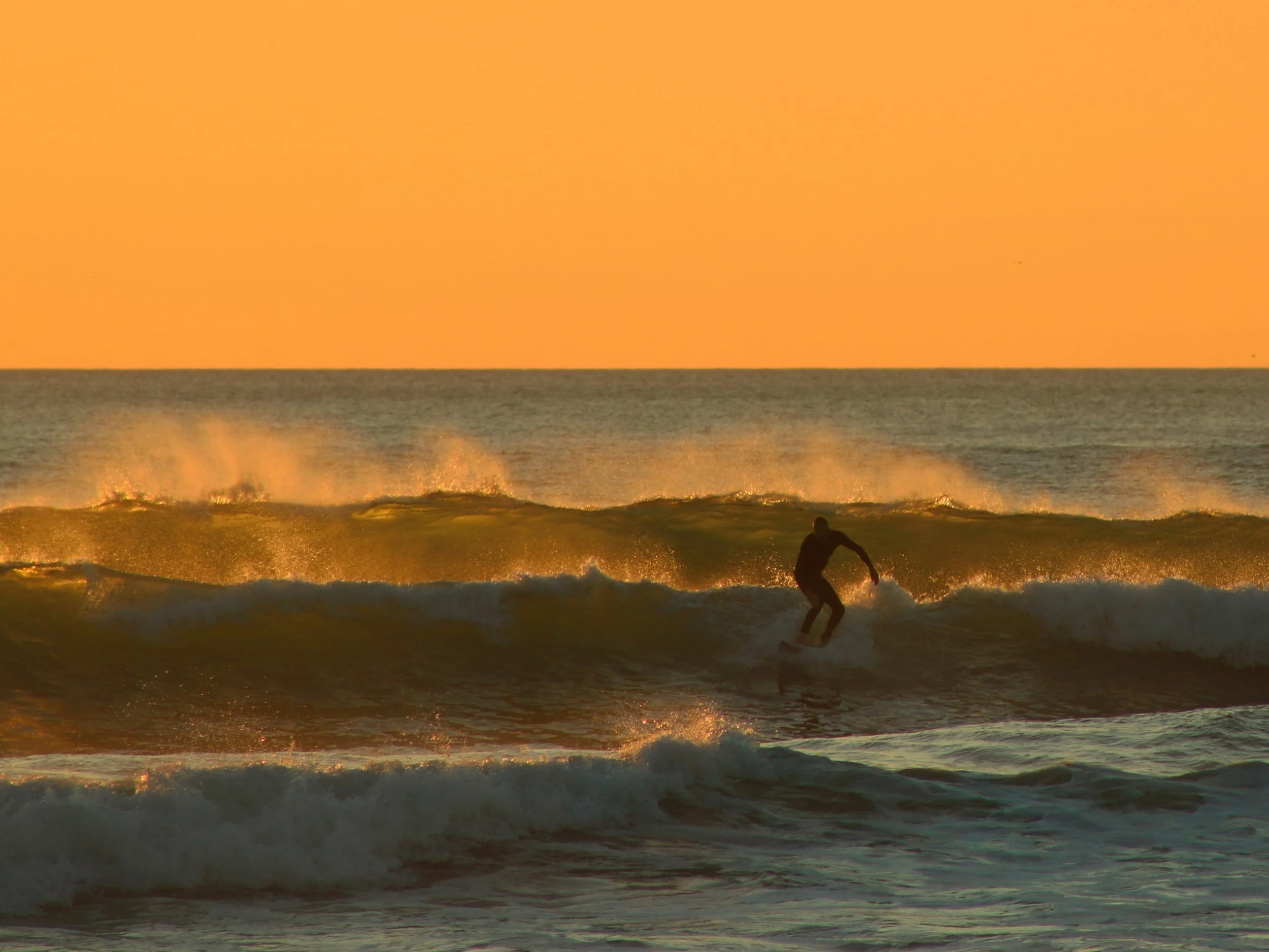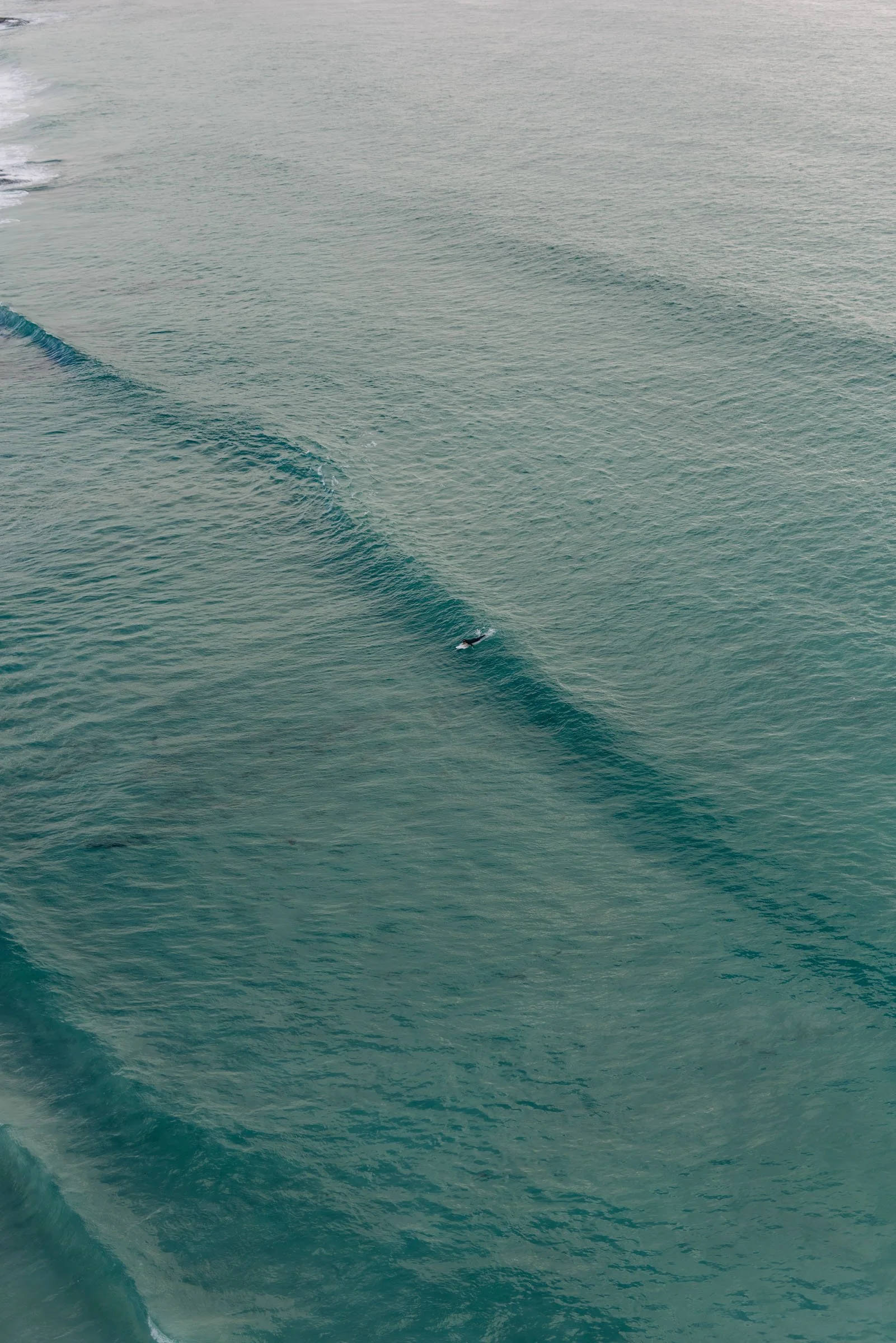
Flinders Island Surfing
Uncrowded lineups. Raw coastal beauty. A wave all to yourself.
If you’re dreaming of empty breaks and an ocean to yourself, Flinders Island surfing is about as close as it gets. Set in the heart of Bass Strait, this remote island is home to a handful of uncrowded waves that roll in against a wild and spectacular backdrop. Here, the surf is shaped by granite reefs, shifting winds and island rhythm.
Whether you’re a seasoned surfer chasing a point break or a beginner after a mellow wave, surfing at Flinders Island offers an unforgettable connection to nature, with the added thrill of carving tracks in waves few others have ridden.
Want to get your bearings and explore more of the coastline? Explore the island map. If you're planning a full day by the water, you can also check out other beach activities.
Flinders Island surfing hotspots
Flinders Island surfing rewards those who time the winds and tides just right. The island’s best breaks, namely Marshall Bay, North East River and Palana, each have their own rhythm, shaped by shifting swells and the wild beauty of Bass Strait.
-
Marshall Bay
On the island’s north coast, Marshall Bay delivers long, playful rights when the conditions align. The broad bay catches west and northwest swells, offering smooth, rolling walls ideal for longboarders or anyone chasing relaxed, open-faced waves.
When offshore winds blow from the east, the water turns glassy and clear, creating an idyllic session framed by granite headlands. It can be one of the most consistent options for surfing on Flinders Island, but timing remains key.
-
North East River
A more adventurous option, North East River sits where the island’s dunes meet powerful tidal currents. This spot works best on a clean south or southeast swell with light offshore winds.
The shifting sandbanks can create fast, hollow peaks that test even confident surfers, while the river mouth backdrop adds to its remote charm. It’s pure Flinders Island surfing: raw, unpredictable and worth the journey for those chasing solitude.
-
Palana
Further east, Palana combines scenic cliffs with shifting reef and beach breaks. On the right tide, you’ll find crisp, peeling waves that run along the sand, perfect for shortboarders.
Northerly winds bring the cleanest conditions, and when the swell wraps around the point, it can deliver surprisingly long rides. Like much of Flinders Island surfing, Palana demands patience but rewards those who wait with some of the island’s most memorable waves.
Which location is right for you?
If you’re chasing mellow, easygoing waves, Marshall Bay is your go-to. For a wilder, more challenging session, head to the North East River. Want a mix of beauty and power? Palana offers both. Whichever you choose, Flinders Island surfing promises stunning scenery, solitude and waves that make every session unforgettable.
Tips for visiting surfers
Before you pack your board for Flinders Island surfing, here are a few things to keep in mind:
Check the forecast
Like many remote destinations, Flinders Island surf spot conditions depend on swell direction, wind and tides. Winter (June–August) tends to bring the most consistent swells, while spring and autumn offer mild weather and glassy conditions.
Bring your own gear
There are currently no surf shops or board hire options on the island, so you’ll need to BYO board, wetsuit and accessories for Flinders Island surfing. We recommend a 3/2 or 4/3 wetsuit year-round since water temps hover around 14–17°C.
Know your limits
Some breaks, particularly Kitchen View and the South West break, can produce powerful waves and strong rips. Always surf within your ability and ideally with a mate — remember, your group might be the only one out.
Embrace the solitude
One of the joys of Flinders Island surfing is the solitude. No lineups, no rush, just you and the ocean (and maybe a curious seal or two).
Surf's up! Book your stay, ask a local
Let us help you turn your Flinders Island surfing trip into something special. From finding the right place to stay near the breaks, to tips on weather windows and hidden beach trails — we’re here to help you experience the island like a local.
Surfing not quite your thing? Explore more Flinders Island adventures.
FAQs
-
Winter (June–August) brings the most consistent swell for Flinders Island surfing, particularly from the south and west. Autumn and spring can also produce great conditions with lighter winds.
-
Yes. Marshall Bay is a gentle, consistent reef break ideal for beginners and intermediates. Other Flinders Island surfing spots, like the North East River and Palana, are better suited to experienced surfers.
-
There are currently no dedicated surf schools or instructors based on the islands, so it’s best suited to self-sufficient surfers. However, if you're travelling with a group or want tips, feel free to reach out, and we may be able to help.
-
Flinders Island surfing is BYOB. There are no surfboard rental services on the island at this time. You’ll need to bring your own board, wetsuit and surf gear.


